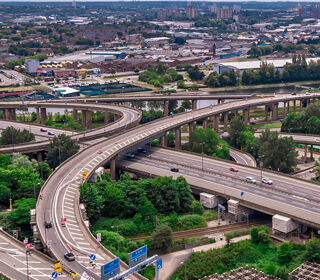
Blog Article

Analysing the experiences of communities to ask the question, 'Does urban greening benefit everyone?' This study aims to explore the themes of urban greening and its effects on residents, providing considerations to take into account in any future greening plans.
Researchers
- Dr Nathan Kerrigan, Principal Investigator
- Dr Susan Jones, Co-investigator (Aston University)
Research background
The greening of urban space has surged in popularity in urban redevelopment discourse over the past 15–20 years. Greening initiatives have been set up to integrate sustainability design concepts into neighbourhood level plans to promote broader social and psychological goals. However, the process of urban greening has wider social implications that deserved more attention. One social implication that urban greening has produced is green gentrification (or greenification). Redevelopment or creation of environmental amenities can lead to communities where certain residents (those white, middle-class individuals) extend considerable effort into actualising an identity based around their production and consumption of green spaces, facilitating a highly problematic and constant excluding and including dynamic. It was important to conduct this research, therefore, because the impact of green urban environmental changes on the lives of individuals is far from clear. The social conditions and constructions of urban greening indeed influence urban redevelopment and re-envisioning, and these constructions can be viewed as a rebuttal to the idea that green environments are always beneficial by highlighting the complexity of urban greening processes and their impact on individuals living and working in urban spaces.
Research aims
This study focuses on resident and community group member experiences in Moseley: an urban village neighbourhood in Birmingham renowned for its mature green landscape. The study seeks to answer the following research question: does everyone benefit from the use of green space in Moseley? To address this research question, the study aims to examine: -
- For whom are green space being (re)created?
- Who takes part in the formal planning processes around the use of local green space and who does not?
- How does social inclusion and exclusion get bundled into this process?
Shifts in government policy over the past ten years towards increased localism has meant that communities are mandated to find local solutions to local problems. However, in practice, increased civic engagement limits the availability of diverse opinions in decisions around neighbourhood planning. One of the central impacts of this study, therefore, is to bring to attention that urban greening initiatives are not always beneficial (e.g., facilitating greater mental health and wellbeing). The move towards the commodification of space has impact on local communities in which the experiences of residents and people who take part in these decision-making processes around urban greening creates power imbalances to the visioning of space and can create situations where spatialised power is enacted in local communities through visioning processes shaped by some groups not others.
Research methods
The study employs an urban political ecological framework to explore who holds power, and how power is enacted at the local level, around decision-making on use of green space. Data is collected using semi-structured interviews and focus groups with 15-20 residents and community group members. The Moseley Community Development Trust – a community organisation that brings together individuals and local community groups to address and tackle local issues – are an advisory board for the project. Input from the Mosely Community Development Trust is crucial to the study as the project has been designed with coproduction in mind, meaning that understanding of the findings are not wholly based on the analyses conducted by the research team but will be reiteratively produced through partnership working with the Moseley community.
Projected outcomes
The study intends to highlight how the greening of urban spaces is not always synonymous with being beneficial (e.g., promoting health and well-being), but can be used as a spatialised expression of power and place-identity by some residents which gives rise to an inclusion and exclusion dynamic that creates tensions and divisions within urban communities.